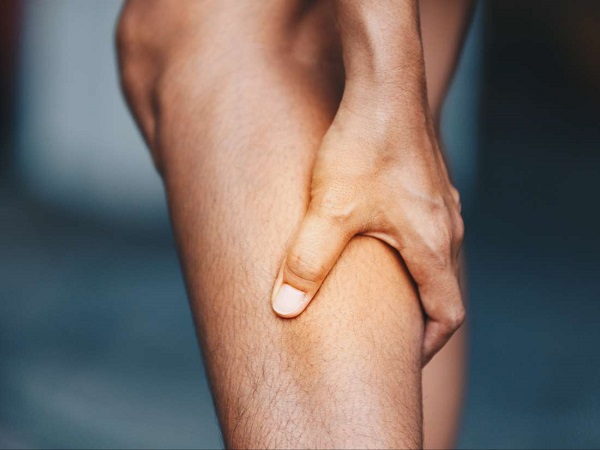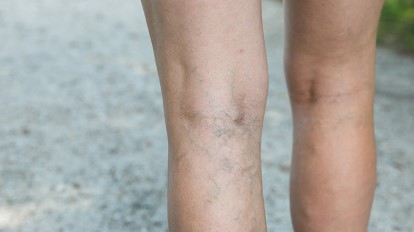Have you been suffering from pains, swellings, aches, and heaviness all in your legs?
Well, you are not alone on this. These are common symptoms of poor blood circulation surrounding the lower region of your body, which results in great discomfort. That’s not all! There is also the occurrence of varicose (bulging and enlarged) veins, which often stem from cosmetic concerns in people, women especially. This is because, with most individuals, the veins bring discomforts with symptoms that break their confidence with the physiology of the visible veins on affected regions of their legs.
What are Varicose Veins?

Before we get into it, what really is ‘Varicose veins’ (Varicositis) or is it just another fancy medical term.

Here’s a simple illustration.
Imagine passing water through a rubber hose and using your feet to stop water from getting out of a specific area of the hose, while the other end is attached to a water source gushing out. The point at your feet will eventually start bulging out due to the obstruction caused by your feet. So there you go. Varicose veins are just terms for bulging blood vessels in the body. They mostly occur as the lower body region of the body (thigh, calves) being either painless or painful to touch.
Popular Articles on ComproGear
Medical Compression Socks Best Medical Grade Compression Socks
Associated Symptoms of Varicose Veins
Typically, varicose veins appear swollen with visible bluish-purple or even red in color for superficial veins just beneath the skin. These can, however, differ for deep venous blood vessels that are not that visible. A common symptom for these types of veins is aches on the affected leg, swelling at points where blood pools causing varicose veins to occur. Thus, these are the primary symptoms of bulging veins – aches, edema, disfigured vein structure, visible vein trees on thighs or/and calves, heaviness and soreness of legs, and on rare occasions severe veins and discolorations.
Causes of Varicose Veins
Several factors play roles in the cause of varicose veins. Earlier we began using the water hose illustration. Using the same illustration, we will be highlighting factors commonly responsible for obstructing the valves of the veins, causing the blood to pool in affected veins.
It is important to note that the vein relies heavily on muscular support and less on gravity to pull blood back towards the heart. Thus, any condition that applies to these muscles around the lower part of our body (abdomen and legs) is most likely to result in the formation of varicose veins. They include:
- Obesity
- Pregnancy
- Pressure from log hours on feet (especially for health workers, hospitality workers etc.)
- Aging: It is known that the veins become weak with age.
- Hereditary, an individual from a family prone to having varicose veins, has greater chances of developing those bulging veins.
- Sedentary conditions also are responsible for most conditions of varicose veins. This is because they result in poor blood flow from relaxed muscles.
Possible Results for Individuals with Varicose Veins
For individuals with asymptomatic varicose veins that are only visible beneath the skin (for superficial veins), it is common to brush off the condition. However, varicose veins unattended can worsen over time. Hence, it’s best to control and manage it given certain changes which are responsible, if the condition is a result of certain lifestyles.
Further conditions of varicose veins left untreated include the occurrence of inflammations, sores, venous ruptures, and ulcers.
Can Varicose Veins be Prevented?
We understand that most of the factors which predispose individuals to varicose veins such as family genetics, age, gender (the higher tendency for women), pregnancy are uncontrollable, Varicose veins, however, can be managed as a condition and also prevented for others.
In preventing varicose veins, here are some prescribed methods validated to be significantly effective:
- Regular movements that close out the chances of a sedentary lifestyle such as sitting or standing for long periods.
- Maintaining a healthy lifestyle
This entails eating the right value nutrients, watching your weight to prevent obesity, avoid smoking and exercising regularly.
- Proper sleeping position for pregnant women
We earlier highlighted the need to keep pressure off the muscles which supports the veins. This also applies to pregnant women mostly.
- Use compression stockings
This can not be overemphasized and should be takeup under the supervision of your physician. Wearing compression stockings come with an understanding of the best fit for your body and health condition. Primarily these stockings help protect your veins by keeping then in the right position while enabling proper blood flow and preventing blood pull.
Other preventive tips include:
- Reducing salt intake is known to have a positive effect on reducing edema.
- Avoid wearing tight fabrics (at the groins, thigh, and waist). It can potentially worsen varicose veins.
- For the ladies, the frequency of wearing high heels should be reduced to more of lower heels (this eases blood flow in the veins and strengthens the calf muscles).
In managing varicose veins, aside from the use of compression stockings which is widely recommended, there are other methods. However, these methods can be excruciatingly painful and expensive! They are medical procedures. They include:
- Injections (where your physician can target and shut down specific veins responsible for the blood pools causing varicose veins).
- Use of heat or lasers, mostly on smaller veins.
- Complete removal of the veins using minute dermal punctures.
Clinical Studies on Compression Stockings for Varicose Veins
Several studies have proven the significant effect of compression stockings in alleviating varicose veins. Research by dermatology associates, Robert Weiss and Scott Adam, indicated the use of compression hosiery as a significantly effective means of preventing and managing varicose veins and its related symptoms. The recommended hosieries are compression stockings with graduated pressures of 20-30mm Hg, 30-40mm Hg, 15-20mm Hg and 8 -15mm Hg.
A 2014 study also confirmed the positive effect of wearing graduated compression stocking, as a means of reducing the risk of Deep Vein Thrombosis (DVT) and edema.
The use of compression stockings with graduated pressures of 18-21mm Hg for a week has also been identified by a 2018 study to be helpful in reducing varicose veins associated symptoms compared to the wear of conventional stockings.
Benefits of Compression Stockings
Coupled with our highlights on the associated symptoms of varicose veins, as well as the cost of managing and treating varicose veins, here are some benefits of compression stockings:
- Save on good cost compared to other methods of treatment
- Cosmetic benefits: Blood flow stimulation created by applied pressure of compression stockings positively affects superficial veins that are visible beneath the skin. This gets you your confidence and comfort.
- Relief from pain and swelling in the affected regions.
- Prevention of disfiguration of veins from pressure applied to support muscles.
- Quick recovery mechanism from surgeries (knee replacements, sclerotherapy, and endovenous procedures).
What Compression stockings are Ideal?
Confused about which kind would be best for your needs?

Your choice of compression stocking will be dependent on the root cause of your varicose veins as highlighted by your physician. Other factors such as the prescription of the amount of pressure and type of compression hosiery will also come into play.
Ideally aside from the graduation of the compression hosiery, they are based on the following criteria:
- Prescription of stockings: Unarguably these types pf compression stockings are based on the choices of your physician and are fitted on you by then to ensure the stockings are as effective as they should be. Not too tight to cut off your circulation.
- Pantyhose: Although they apply the least amount of pressure, they still exert some amount of force. Compression pantyhose are accessible in various stores.
- Compression stockings/socks: They are available in graduated forms and as such exert much pressure than the pantyhose support. The compression stockings are accessible in the form of thigh-high and knee-highs. The thigh-high compression stockings are often recommended if you’re recovering from surgery or having varicose veins. However, the knee-high stockings are often worn during exercises to promote blood circulation
How to Use Compression Stockings
It is often recommended that you be properly informed and have an understanding of the working mechanism of compression socks as a therapy. Typically, it aims to reduce the size of veins by diameter while increasing the amount and speed of blood flow upwards towards the heart. Hence, it is important the right size of the compression hosiery is worn.
This can be done with the help of medical personnel to preclude any complications. About four main criteria should be watched out for when making a choice on compression stockings.
- Compression fit
- Ease of wear: By this, we mean that the choice of stockings should be worn without a struggle, otherwise it could be counter-productive.
- Presence of infection: it is often of medical advice to not wear items that can aggravate infections. Your physician should be consulted on this, especially if it concerns getting compression stockings.
- Allergy to stockings materials: This can be nylon, elastane or even cotton and much more.
What to Take Note of
Here are some tips to keep in mind as you manage or prevent against varicose vein using compression hosiery.
- Always ensure your compression stockings are properly fitted. They should be snug but comfortable.
- Keep by all instruction on how to put on and take off the compression stockings
- Be vigilant for skin changes that could be sensitive to the compression stockings material.
- If you do feel the need to go for an elastic bandage, only do so with your physician’s advice.
Compression stockings, when worn for the right reasons, should be worn at the prescribed length of hours and specific periods. For varicose veins, it is often worn at night with the feet up to ease circulation.
Overall sticking to a healthy lifestyle and practicing a preventive form of healthcare through the use of compression hosieries such as compression stockings are ideal, pocket worthy and effective means to varicose veins. Why not save yourself time and resources!
